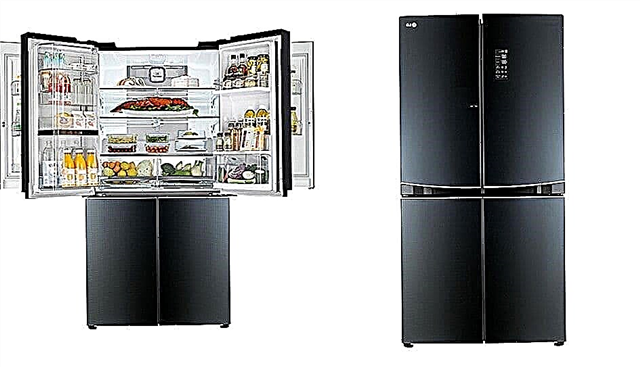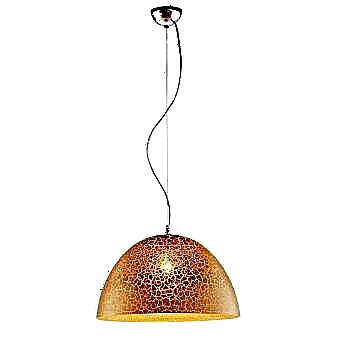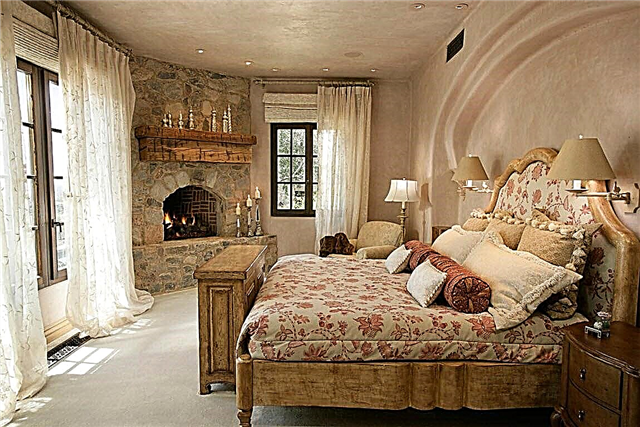
You can create a universal, convenient and ergonomic place to store things and clothes in the house with the help of one very useful furniture element. For this, a walk-in closet is ideal; built-in wardrobes will make living in a house or apartment more comfortable, as well as help create a unique style of home.
A variety of types of built-in wardrobes for the dressing room allows you to create the interior of any room to your taste. There are three main types of this segment of furniture: wardrobes, wardrobes and partially built-in wardrobes. Built-in wardrobe cabinets are very popular, as they have a wider functionality compared to their cabinet non-built counterparts:
- wardrobes are wardrobes that have several compartments designed to store specific types of clothing, and also have an open, closed or partially open storage method. The doors of such a cabinet can be either partially sliding or swinging. The inner side of the swing doors in some cases is equipped with fittings on which various accessories can be placed,
- sliding wardrobes differ from wardrobes in that they have exclusively sliding doors. Otherwise, their internal structure is very similar to that of the wardrobe. Usually coupe doors are equipped with mirrors so that a person can see himself in full growth. Given that the doors do not rotate in either direction, the mirrors will always be available for review. The built-in dressing room in the hallway is perfect for using compartment doors,
- partially built-in wardrobe can become as functional as built-in wardrobe rooms or wardrobe systems, as usually a niche is allocated for these purposes, and part of the cabinet is assembled from a cabinet structure. The main advantage of this design is its internal space, the scale of which gives odds to any other cabinets. In addition, embedding furniture means reducing its cost. However, this advantage sometimes becomes a minus, since when mounting the frame to the walls and ceiling, the surfaces of the latter undergo deformation.

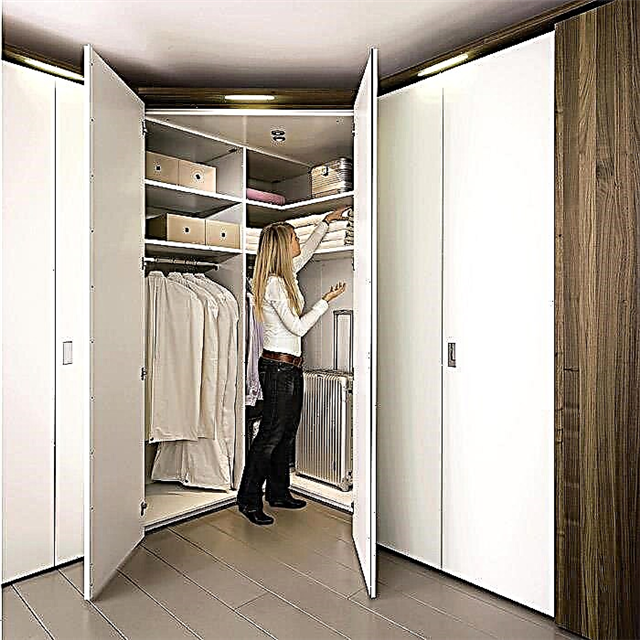

Material for the decoration of the facade
The main materials for organizing the front panel of any cabinet usually use wood, glass, metal, plastic and chipboard. The standard and most affordable are facades prepared on the basis of chipboard panels. They are easy to process, respectively, a larger number of their forms are available:
- glass facades of built-in wardrobes will help to visually expand the room, to make it more spacious. If you make decorative lighting inside the dressing room, the room will acquire a unique image. Glass facades in most cases are suitable for interiors in the style of hi-tech or modern. Frosted glass (lacomat), now popular, will not allow prying eyes to determine what is in the closet, but will become useful in orienting the owner. Transparent and translucent materials will extend the life of movable mechanisms due to their more rare use during the search for the necessary thing,
- wooden facades are more suited to classic interiors. They also require a combination with the rest of the furniture in the room. Built-in wardrobe in the bedroom, made of wood will be a great addition to the classic design,
- Chipboard panels are the most affordable material. They are equipped with mirrors or may be part of a combination panel. For example, the base of the wings can be made of glass or plexiglass, and the middle insert of particleboard. This technique will make the design more interesting, and the presence of a glass surface will make the room visually more spacious,
- lacobel is a glass coated on the outside with colored lacquer. Such facades can fit into any interior, depending on the color and structure of their surface,
- plastic facades are created on the basis of solid plastic panels, and look impressive due to their size. Thanks to their manufacturing technology, panels of any size, color and texture can be ordered.
Some workshops print photos of any size on the plastic basis of the facade of the built-in wardrobe.

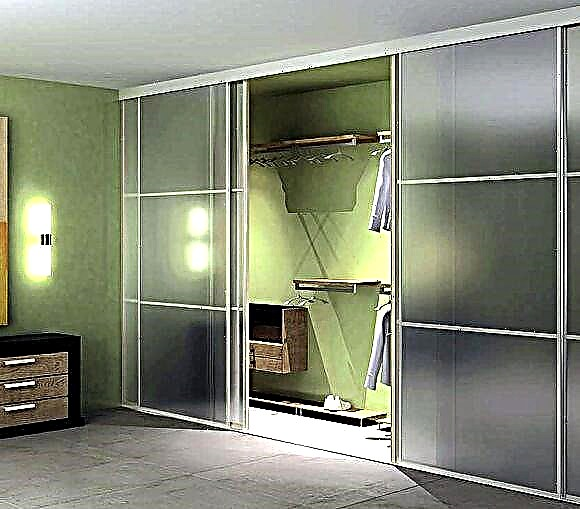



Filling
Wardrobe filling is carried out according to the recommended principles of filling wardrobes and wardrobes. This means that it will be desirable to divide its internal space into horizontal zones and additional compartments. This, of course, is not an axiom, since each storage project for things is, in fact, individual, but such recommendations will help optimize the use of cabinet space.
Materials for the manufacture of its insides are metal, plastic, glass, wood and chipboard. Parts made of chipboard and wood are more versatile, and allow you to attach hardware to them or modify them without special dexterity. Metal elements look more modern, however, they are rarely modifiable, only if there are additional branded consoles or accessories. Separation zones of the built-in wardrobe rooms of the photo perfectly demonstrate:
- the first lower zone is reserved for storing shoes and rarely used clothes and things. She has a height of more than 45 centimeters in order to put tall women's boots there. It is equipped with shelves for shoes and compartments for baskets or boxes. Partially the lower compartment is closed by additional doors,
- middle and basic level is a place of storage of often used clothes from underwear to a winter coat. For outerwear, a bar is installed in a compartment with a height of more than 1.7 meters. The middle tier is more open than the lower. It is organized in the form of shelves and drawers. An excellent solution to save time when choosing the right clothes is to install boxes with transparent or translucent front panels,
- the upper zone defines the storage location for hats and rarely used items. It is recommended to do it not very deep, as this will make it difficult to extract objects from it.

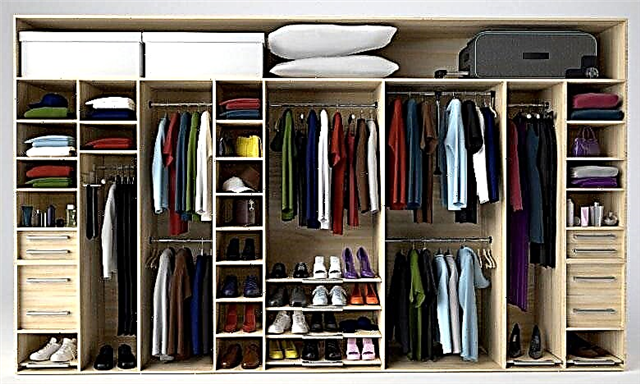

Location selection
The choice of placement of the built-in wardrobe is determined by both the preferences of the designer and the plan of the home. The main locations for the successful placement of the built-in wardrobe will be the bedroom and the entrance hall. An ideal option in this case would be to equip the cabinet in a niche, which will save on materials and occupy the useful space of the room.
Recall the differences between the facades of wardrobes. For example, swing doors have one big plus - opening them, you can see the contents of the cabinet at once. This should be taken into account when choosing a place, since open doors will interfere in a narrow corridor or small hallway. This option is more suitable for bedrooms, in addition, the louvered doors look very attractive there. For the corridor, it is better to choose the type of compartment door built into the facade of the wardrobe.
A great idea would be a corner wardrobe option that fits a square room and uses its area more rationally.
Built-in wardrobes in the bedroom and hallway, which replace the wardrobes, will allow you to divide the clothes into two parts. It is suitable for large apartments and houses. Such a move will create two storage areas - shoes, outerwear or, for example, sports equipment will prevail in the hallway wardrobe, and in the bedroom you can put home textiles, underwear, shirts, jackets, trousers and more. This, of course, applies to housing large areas. In conditions of space deficit, one universal dressing room is created, where all things at home are determined. By the way, a do-it-yourself wardrobe will be a great chance to create an interior in a room exactly as the owner sees it, however, this method may require some skill because it is not difficult, but troublesome to build a structure.
What is a dressing room?
When designing the interior of modern apartments, the emphasis is on ergonomics. It is important to save maximum free space, but at the same time make the composition of the rooms harmonious and comfortable.
Wardrobe closet becomes a rational acquisition. These are universal wardrobe designs, characterized by large capacity and ease of use.
The dressing room is universal. Thanks to a wide range of modifications, it is possible to arrange the structure both in a narrow hallway and in a spacious bedroom. A key feature is the sliding doors that move thanks to the rollers. This saves free space, does not require additional space.
Most often, dressing rooms are located in large niches. As a result, you can save the size and area of the room and prepare a convenient wardrobe, which can accommodate both daily clothes, shoes, and hats. In this case, the product is developed on an individual project. The master takes measurements and only then proceeds to draw up a sketch and subsequent assembly of the structure.
Design of wardrobe rooms and systems - photo.







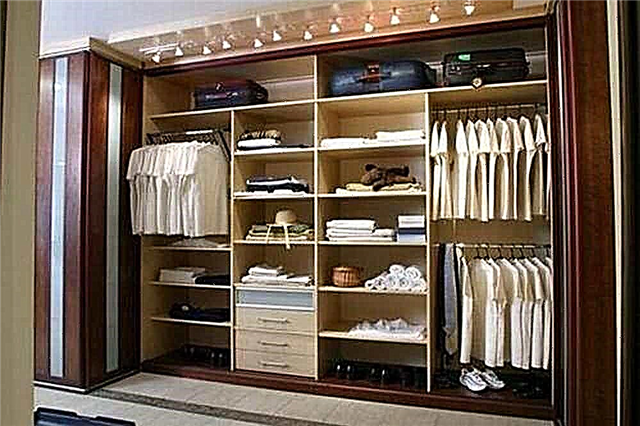
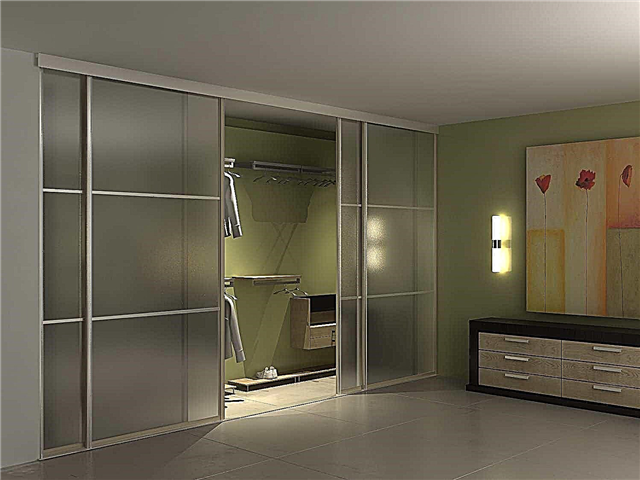

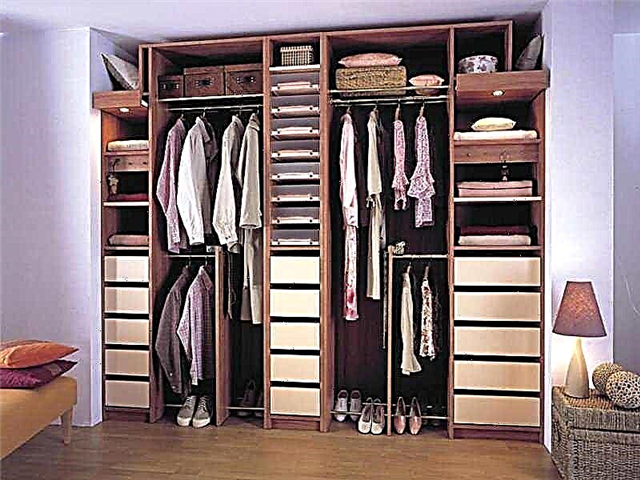




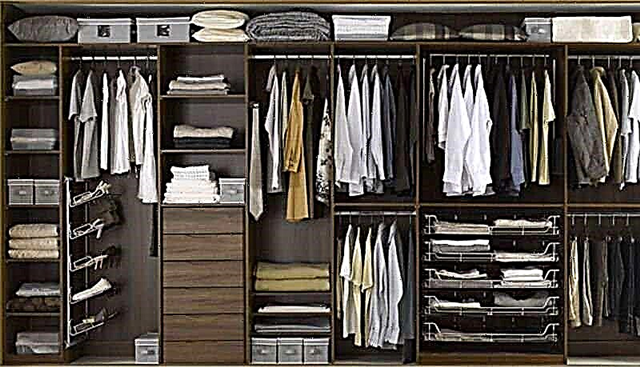


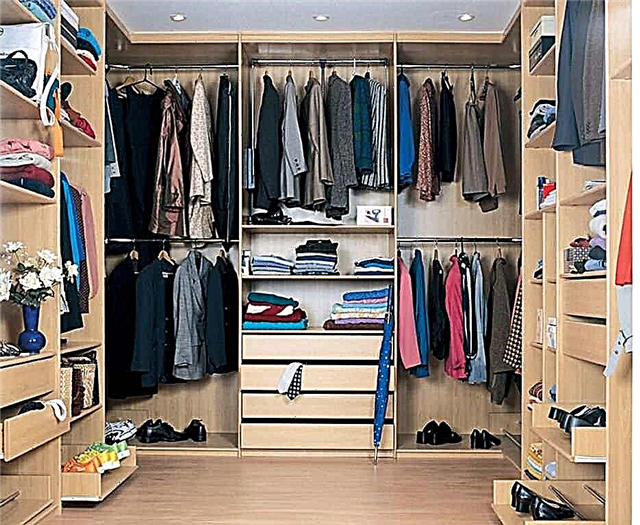









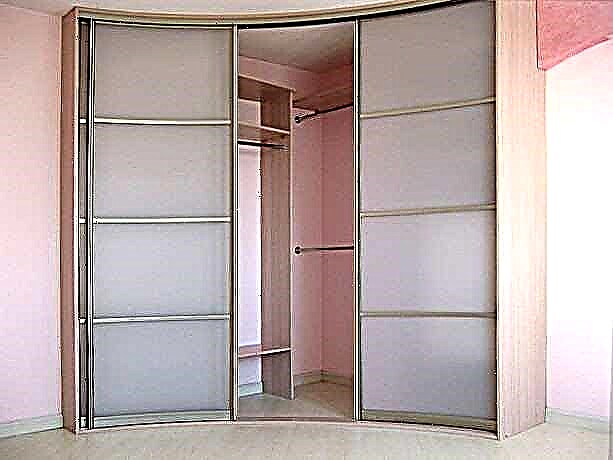


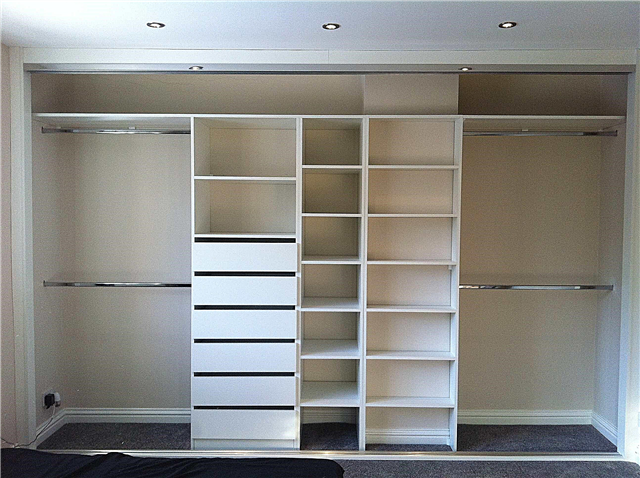
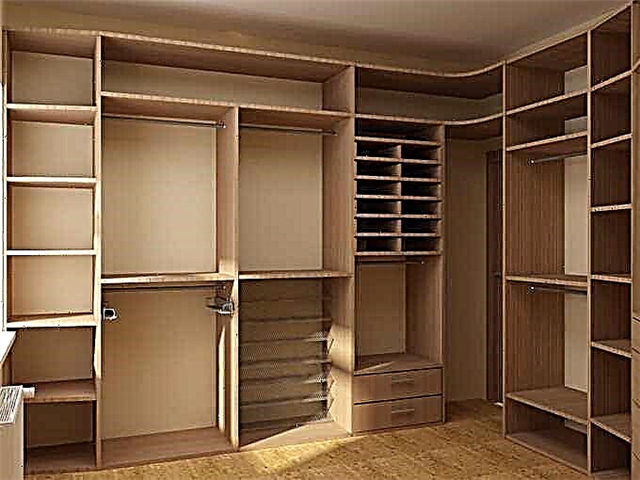


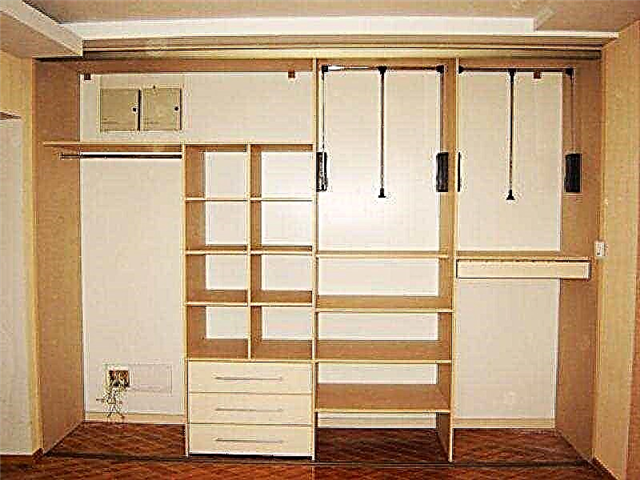




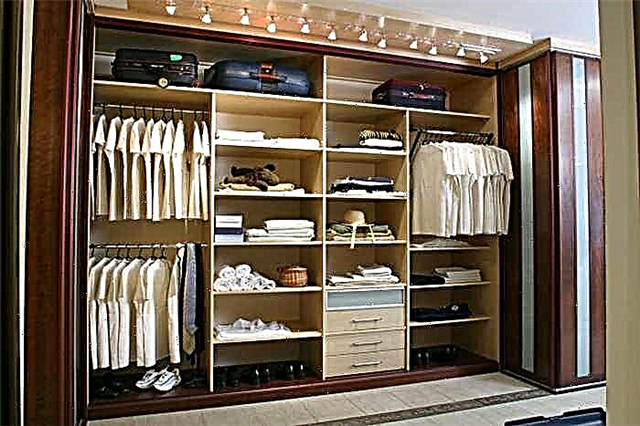



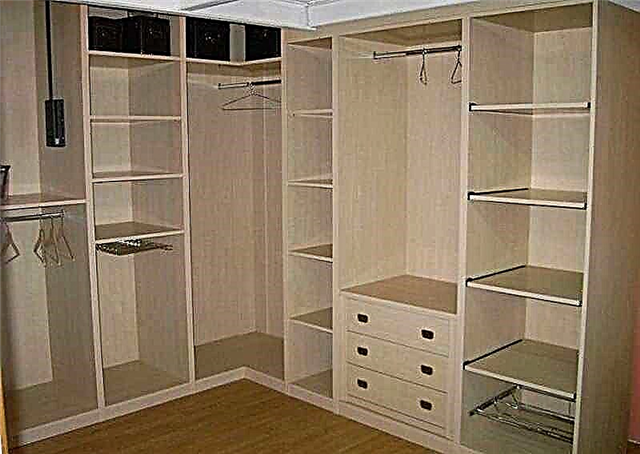
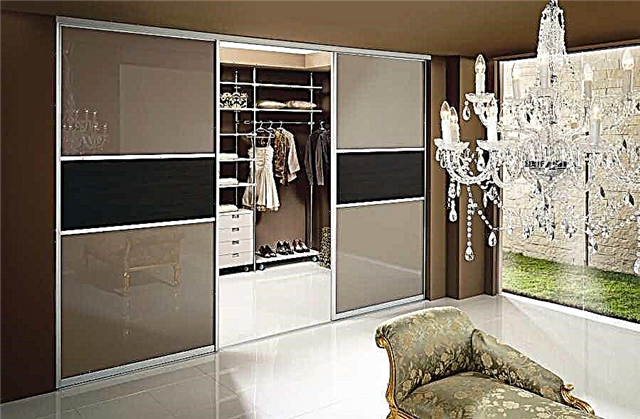





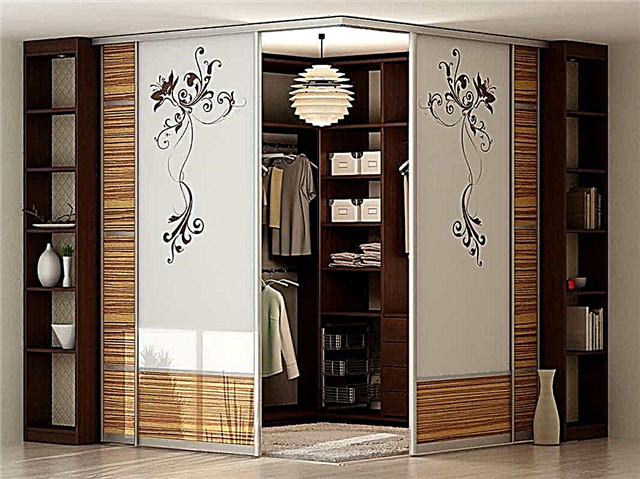
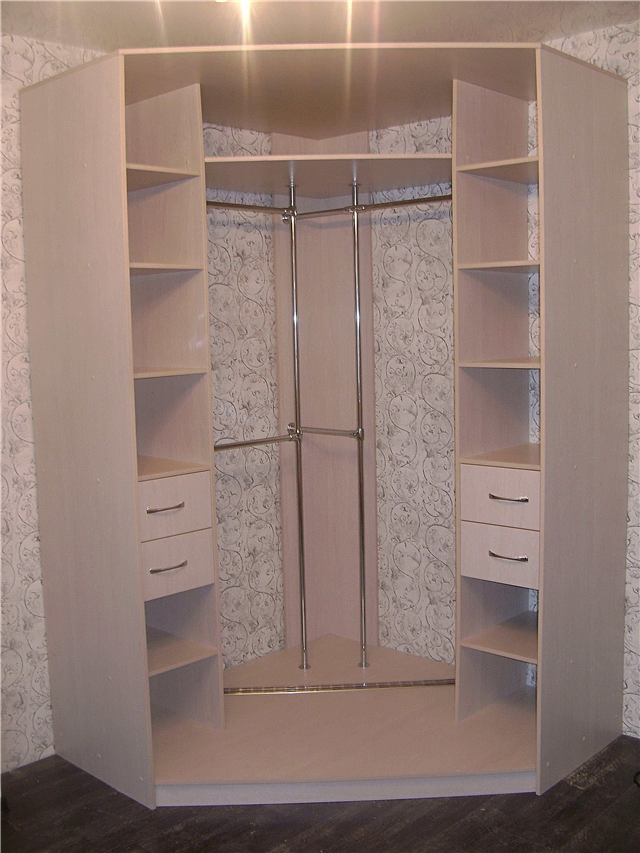











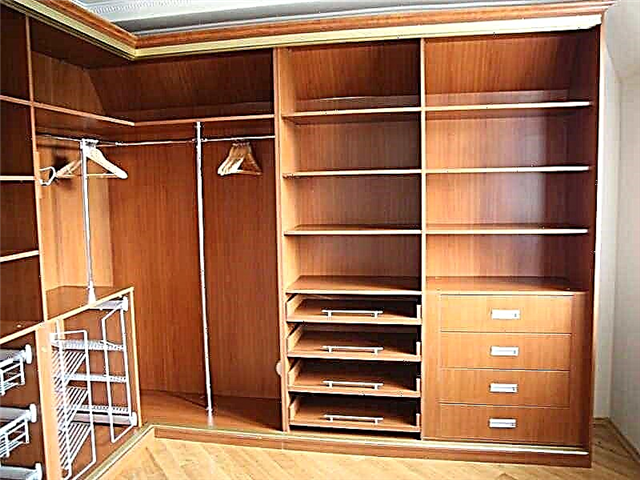


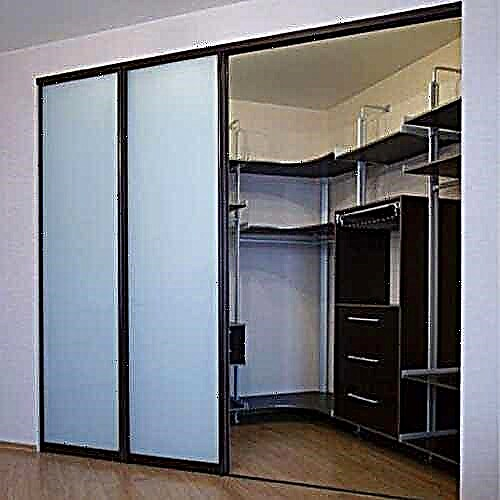










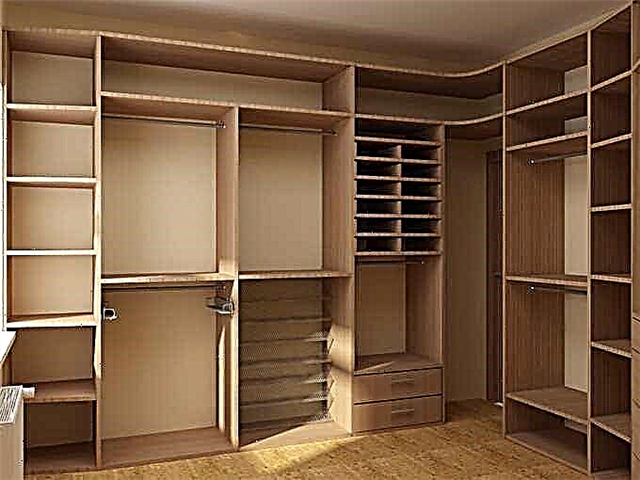


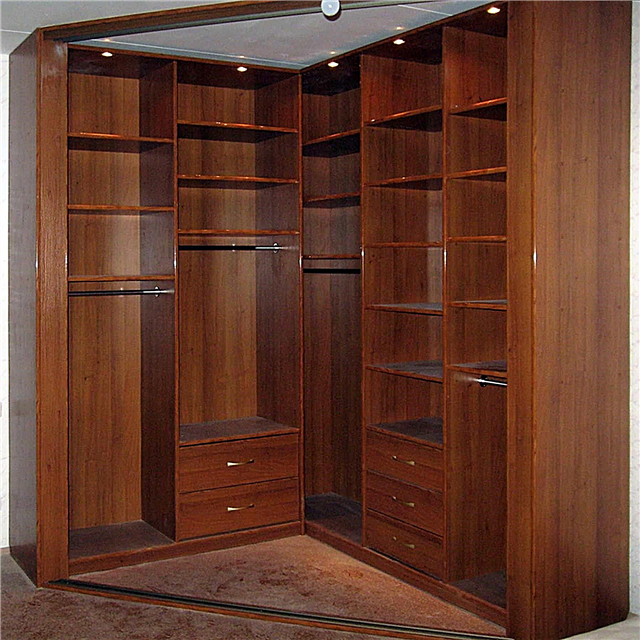


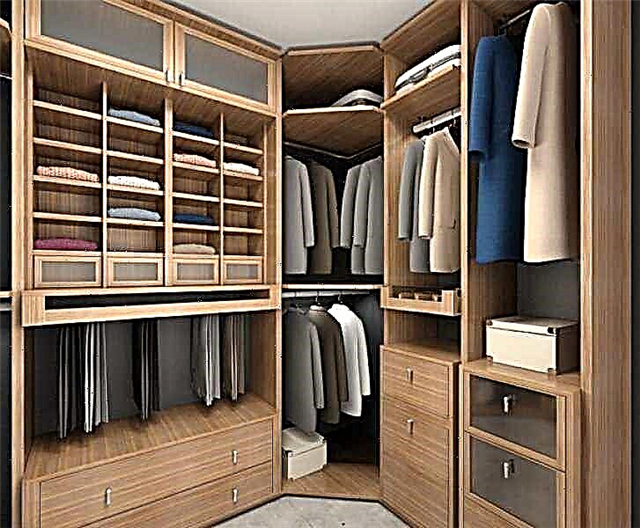
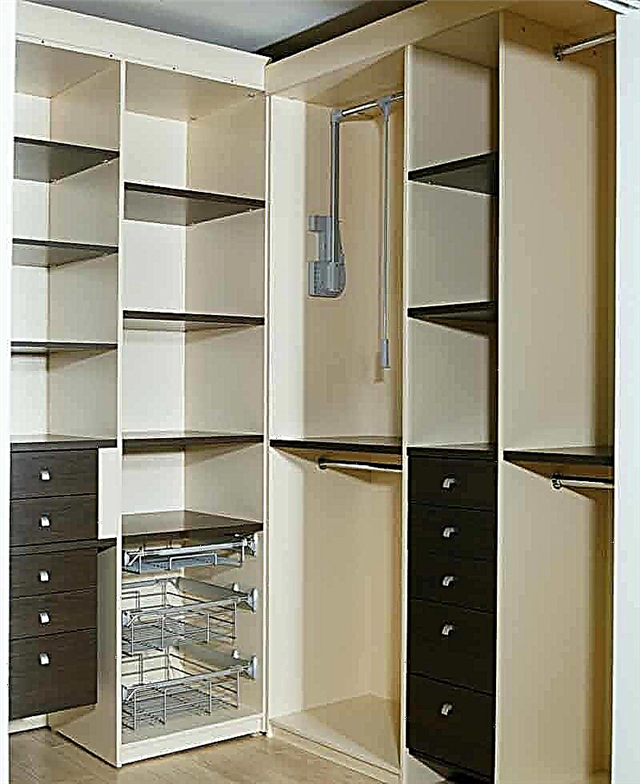

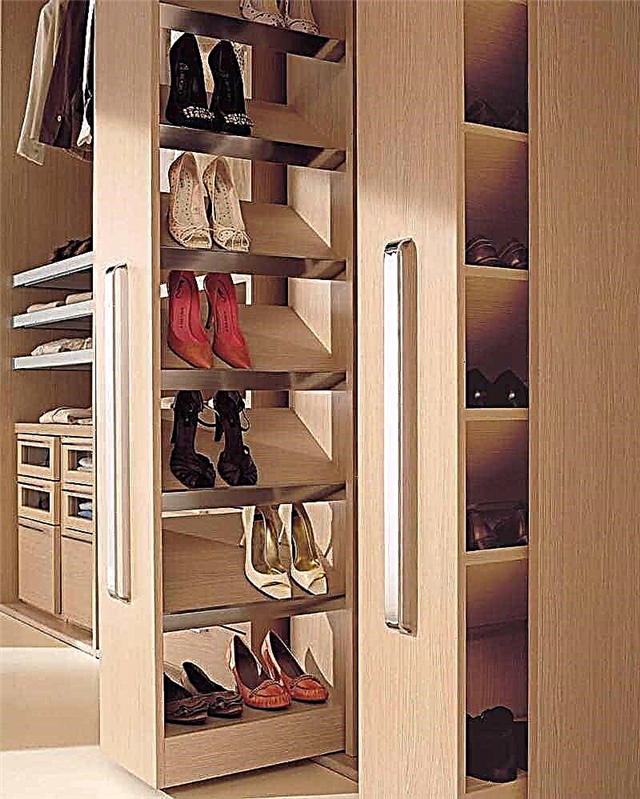








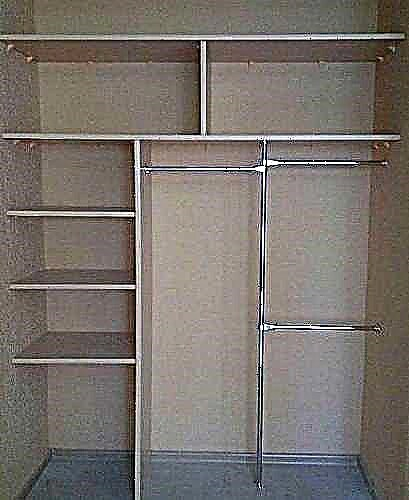








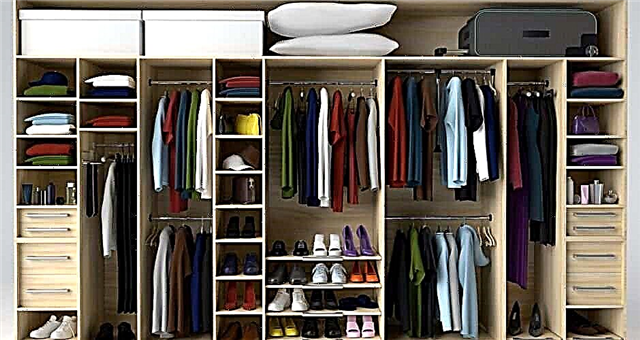
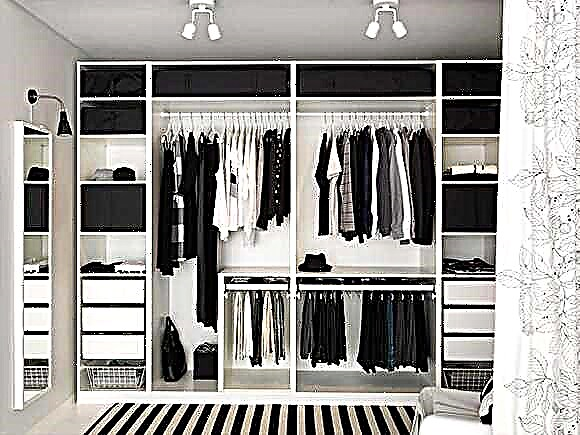


What determines the price of wardrobe systems?
Most wardrobes are made of artificial wood. This is a versatile material. Panels prepared from waste chips, designed for long-term operation. The main advantage is low weight. This means that the cabinet does not create unnecessary load on the floor surface, which is important when it comes to laminate flooring or parquet.
Artificial wood involves cheap manufacturing technology. You can also order wardrobes with different colors. Using special paint and varnish mixtures, the panels are styled to match the shade of dark and mahogany. In another situation, solid color options are created. Depending on the size and shape, the structure of shelves and compartments is being worked out, which can vary in size and height.
The cost of manufacturing is also affected by the nature of the hardware. The durability and ease of use of furniture depend on the quality of the rollers, handles and locks. The models of sliding wardrobes with an external mirror, which is mounted on the sash, are in great demand. Massive mirrors on the doors become a convenient place for changing clothes. In addition, this configuration looks European and helps to make the living space bright and spacious.
Gallery of completed work
See, choose, do as in the picture or to your taste. No limits - check it out for yourself!
* Prices on the site are not a public offer

Material: chipboard "EGGER"
Edge: PVC "REHAU"

Material: chipboard "EGGER"
Edge: PVC "REHAU"

Material: chipboard "EGGER"
Edge: PVC "REHAU"

Material: chipboard "EGGER"
Edge: PVC "REHAU"

Material: chipboard "EGGER"
Edge: PVC "REHAU"

Material: chipboard "EGGER"
Edge: PVC "REHAU"
Profile: Alum. system "MODUS"
Facade filling: Glass with Oracal film

Edge: PVC "REHAU"

Material: chipboard "EGGER"
Edge: PVC "REHAU"

Material: chipboard "EGGER"
Edge: PVC "REHAU"
Filling of facades: LDSP "EGGER"

Material: chipboard "EGGER"
Edge: PVC "REHAU"
Profile: Alum. System "MODUS"
Filling of facades: chipboard "EGGER". Glass with photo printing.

Material: chipboard "EGGER"
Edge: PVC "REHAU"

Material: chipboard "EGGER"
Edge: PVC "REHAU"

Material: chipboard "EGGER"
Edge: PVC "REHAU"
Profile: Alum. System "MODUS"
Filling of facades: Glass with Oracal film. Silver mirror

Material: chipboard "EGGER"
Edge: PVC "REHAU"

Material: chipboard "EGGER"
Edge: PVC "REHAU"

Material: chipboard "EGGER"
Edge: PVC "REHAU"

Material: chipboard "EGGER"
Edge: PVC "REHAU"

Material: chipboard "EGGER"
Edge: PVC "REHAU"

Material: chipboard "EGGER"
Edge: PVC "REHAU"

Material: chipboard "EGGER"
Edge: PVC "REHAU"
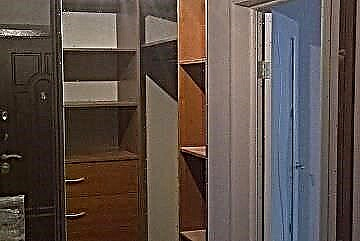
Material: chipboard "EGGER"
Edge: PVC "REHAU"
Profile: Alum. System "MODUS"
Facade filling: Mirror silver
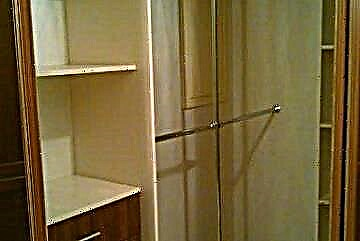
Material: chipboard "EGGER"
Edge: PVC "REHAU"

Material: chipboard "EGGER"
Edge: PVC "REHAU"
Profile: Alum. System "MODUS"
Filling of facades: chipboard "EGGER". Mirror silver with chemical. pickling

Material: chipboard "EGGER"
Edge: PVC "REHAU"
Profile: Alum. System "MODUS"
Filling of facades: LDSP "EGGER"

Material: chipboard "EGGER"
Edge: PVC "REHAU"
Profile: Alum. System "MODUS"
Facade filling: Mirror silver

Material: chipboard "EGGER"
Edge: PVC "REHAU"

Material: chipboard "EGGER"
Edge: PVC "REHAU"
Profile: Alum. System "MODUS"
Facade filling: Mirror silver

Material: chipboard "EGGER"
Edge: PVC "REHAU"
Profile: Alum. System "MODUS"
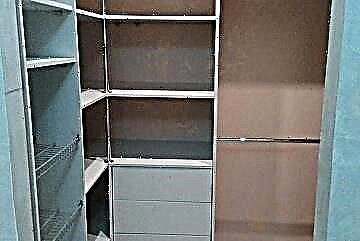
Material: chipboard "EGGER"
Edge: PVC "REHAU"
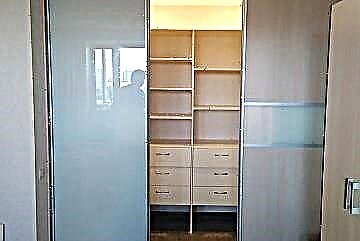
Material: chipboard "EGGER"
Edge: PVC "REHAU"
Profile: Alum. System "MODUS"
Filling of facades: chipboard, Glass with Oracal film combi
We also produce
Advantages of a separate dressing room:
- It takes up as much space as an ordinary wardrobe, but holds up to 40% more things.
- Due to the absence of gaps between the floor and the ceiling, it prevents dust accumulation in hard-to-reach places.
- It looks more modern and stylish than a boring wardrobe.
- Saves a lot of time during the collection: everything is stored in one place, so there is no need to move around the apartment in search of the right thing.
Types of wardrobe closets
If you allocate a separate room for things - an impermissible luxury in your case, you can order a built-in wardrobe. Usually it is located in a wall niche and contains a large number of things. The built-in wardrobe looks much more compact, because it is in the same plane with the walls, blending seamlessly into the interior.
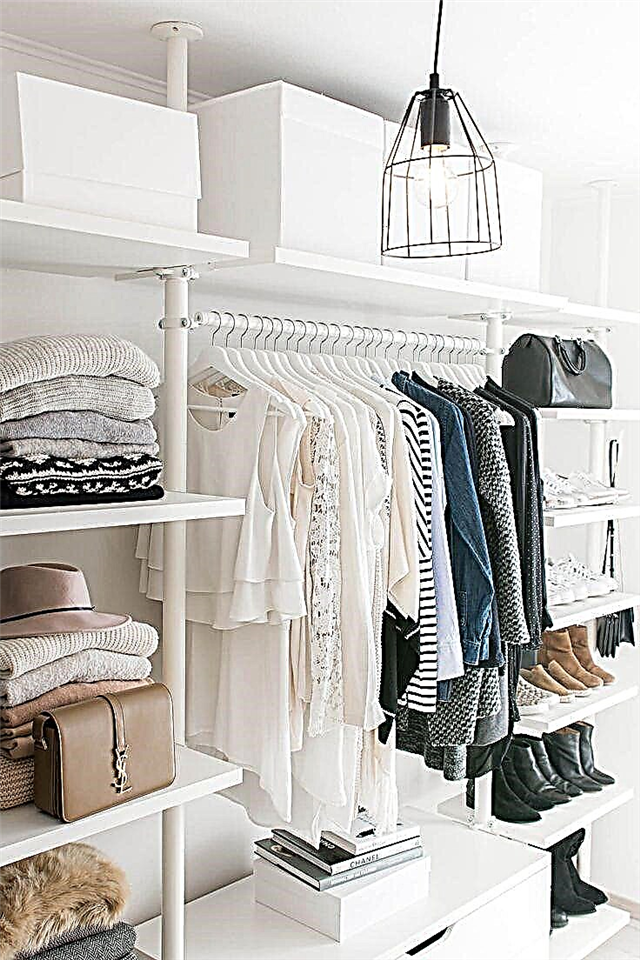
The advantage of this option is that the cabinet will be manufactured according to your size. And you can come up with its own filling in the form of shelves, drawers and rods yourself, unlike ready-made store options.

If such a closet is located in the bedroom, it can be hung with curtains that combine with the rest of the room's textiles. This design decision will add warmth and coziness to the bedroom.

You can make a wardrobe by contacting a specialized company for the manufacture of custom-made furniture. Specialists will take measurements, discuss with you all the details and select the appropriate design and color scheme.
A wardrobe with a large capacity also makes it possible to solve the problem of storing an impressive amount of clothes and shoes. It is a great substitute for a dressing room for people with low incomes.
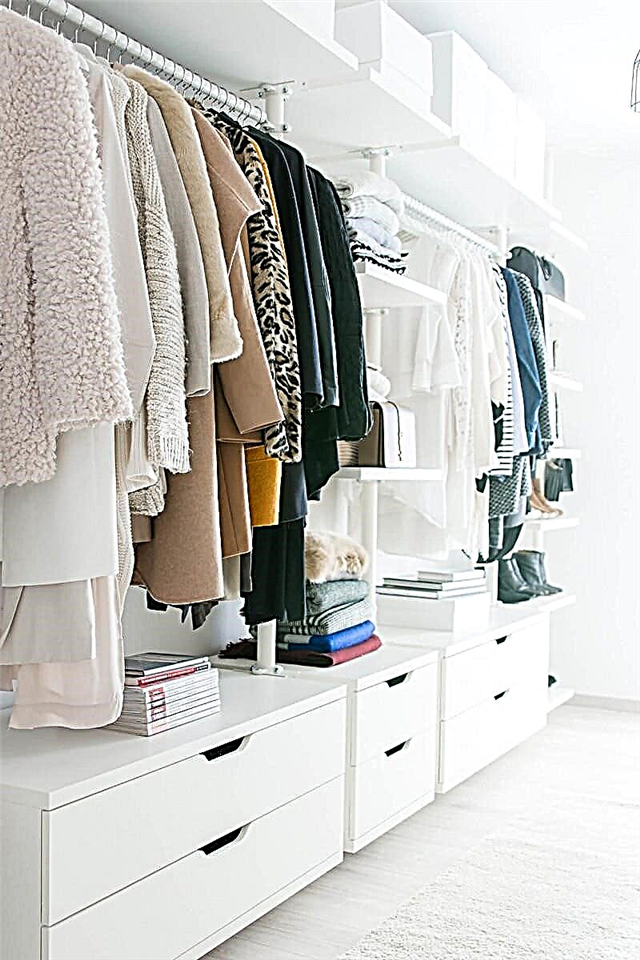
Such a cabinet takes up less space than usual due to sliding doors that do not interfere with the passage and do not hurt objects that are next to the cabinet when opening. Therefore, it makes sense to purchase a closet for small apartments. Sliding wardrobes are also made to order according to individual sizes.

Many install a wardrobe in the hallway, leaving free space in the remaining rooms. This is a perfectly rational solution for a family of several people with children. After all, everyone also needs a separate bed, and then where to find a suitable place for a closet? It is in the hallway.

To functionally utilize more space, a corner cabinet is often installed in the hallway to the ceiling. Due to its depth and height, it is convenient to store in it not only clothes, but also voluminous things, such as winter blankets or suitcases that can be placed on the upper shelves.

In some apartments there is a very small narrow corridor, the place in which is absolutely not enough for any furniture. In this case, you have to install cabinets in the bedroom. They can be beat designer by placing on both sides of a window opening or bed.

It is necessary that they be made in one design and support the overall style of the room. Open decorative shelves for accessories, lamps and cute trinkets add comfort to the bedroom and additionally decorate the wardrobe.It is convenient to store bedding, linen and household items in the bedroom. If you place the wardrobe along the entire wall, it will be able to replace a full wardrobe room.

